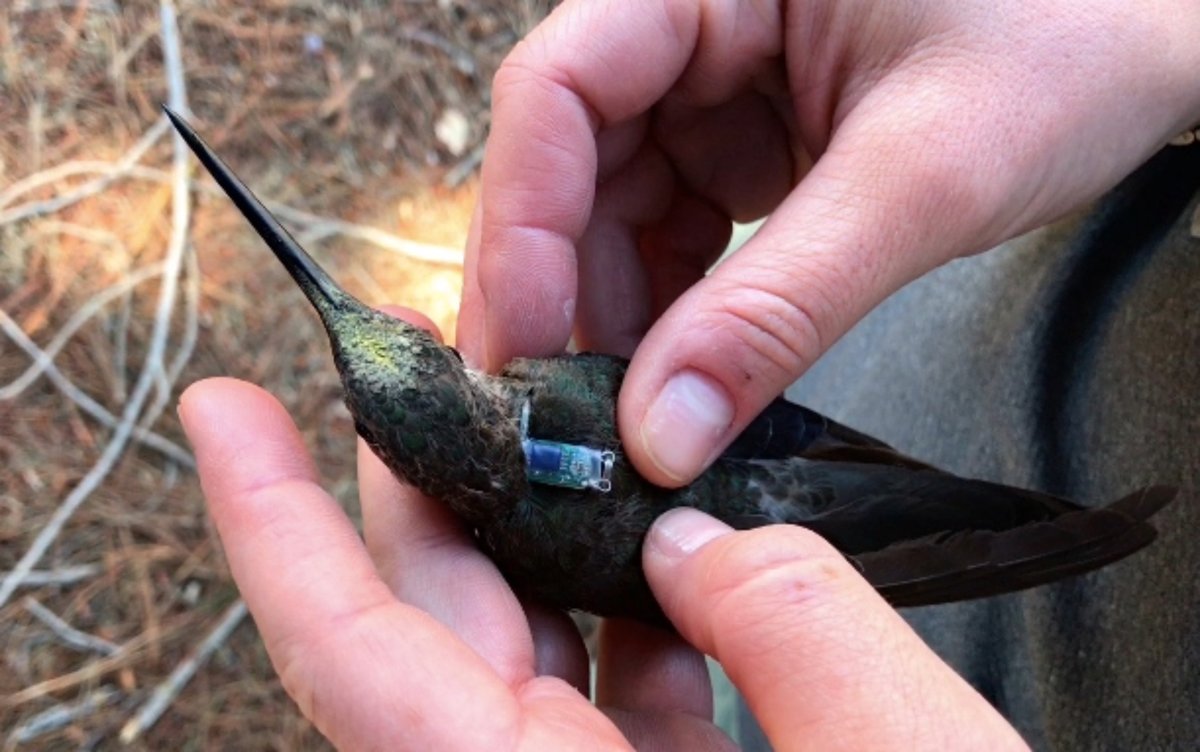Researchers with the University of New Mexico (UNM) have discovered where a new species of hummingbird travels after breeding by placing miniature backpacks with tracking devices on the giant hummingbird, solving a mystery swirling since the 19th century, according to the university.
The recently published eight-year study was conducted with the help of team leader Dr. Jessie Williamson, along the Pacific Coast of Chile. The study uncovered that the migratory giant hummingbirds, which are eight times the size of a black-chinned hummingbird, “ascend over 13,000 feet in elevation to the high Andes, flying as far north as the mountains of Peru,” according to a release from the university.
In the release, the university also says that the migration of these hummingbirds covers more than 5,200 miles, nearly the distance from New York City to Buenos Aires.
In efforts to observe the migration, Williamson attached mini backpack tracking devices that were light in weight and small, designed to not impede the flight style of the hummingbird, the release noted. “It took a lot of trial and error to come up with a suitable harness design,” Williamson said. “Hummingbirds are challenging to work with because they are lightweight with long wings and short legs. They’re nature’s tiny acrobats.”
Newsweek has reached out to the University of New Mexico via email and Williamson via phone for additional comment on Tuesday night.

Christopher Witt
Christopher Witt, UNM professor and director of the Museum of Southwestern Biology, said: “Nobody had figured out where migratory giant hummingbirds go because they were hiding among the non-migratory giant hummingbirds.”
“The two forms of giant hummingbird look almost identical—for centuries, ornithologists and birders never noticed that they were different … We couldn’t have figured this out without the miniaturized trackers,” Witt said in the school’s release.
The research team also discovered that the giant hummingbirds pause their migration for “periods of days,” to allow their lungs and blood to acclimate to the high altitudes.
The two different hummingbirds were also distinguished by genome sequencing museum specimens, the university said. The release also noted that the “valuable historic specimens” helped the team find that the giant hummingbird has evolved separately for nearly 3 million years. “More than enough time to make them distinct species,” the release said.
“This effort is just the beginning,” Williamson concluded in the release. “Combining migration tracking with genomics has opened up research opportunities that could fill a lifetime.”
Uncommon Knowledge
Newsweek is committed to challenging conventional wisdom and finding connections in the search for common ground.
Newsweek is committed to challenging conventional wisdom and finding connections in the search for common ground.





